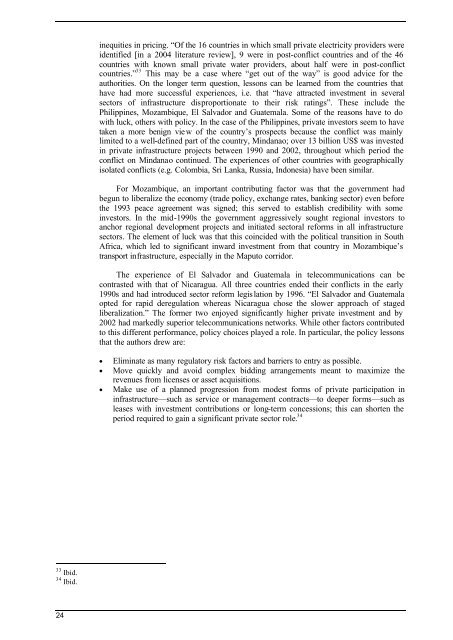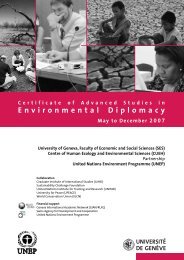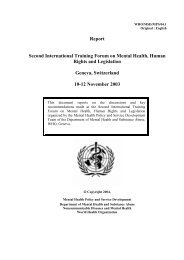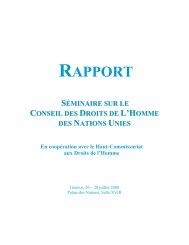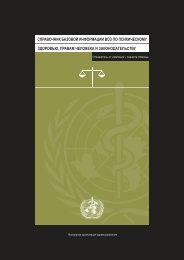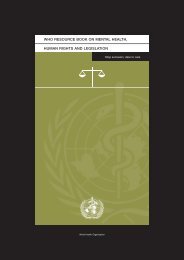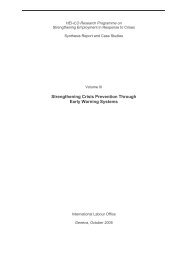Volume 1 Cedric - revised luca Final - RUIG-GIAN
Volume 1 Cedric - revised luca Final - RUIG-GIAN
Volume 1 Cedric - revised luca Final - RUIG-GIAN
You also want an ePaper? Increase the reach of your titles
YUMPU automatically turns print PDFs into web optimized ePapers that Google loves.
inequities in pricing. “Of the 16 countries in which small private electricity providers wereidentified [in a 2004 literature review], 9 were in post-conflict countries and of the 46countries with known small private water providers, about half were in post-conflictcountries.” 33 This may be a case where “get out of the way” is good advice for theauthorities. On the longer term question, lessons can be learned from the countries thathave had more successful experiences, i.e. that “have attracted investment in severalsectors of infrastructure disproportionate to their risk ratings”. These include thePhilippines, Mozambique, El Salvador and Guatemala. Some of the reasons have to dowith luck, others with policy. In the case of the Philippines, private investors seem to havetaken a more benign view of the country’s prospects because the conflict was mainlylimited to a well-defined part of the country, Mindanao; over 13 billion US$ was investedin private infrastructure projects between 1990 and 2002, throughout which period theconflict on Mindanao continued. The experiences of other countries with geographicallyisolated conflicts (e.g. Colombia, Sri Lanka, Russia, Indonesia) have been similar.For Mozambique, an important contributing factor was that the government hadbegun to liberalize the economy (trade policy, exchange rates, banking sector) even beforethe 1993 peace agreement was signed; this served to establish credibility with someinvestors. In the mid-1990s the government aggressively sought regional investors toanchor regional development projects and initiated sectoral reforms in all infrastructuresectors. The element of luck was that this coincided with the political transition in SouthAfrica, which led to significant inward investment from that country in Mozambique’stransport infrastructure, especially in the Maputo corridor.The experience of El Salvador and Guatemala in telecommunications can becontrasted with that of Nicaragua. All three countries ended their conflicts in the early1990s and had introduced sector reform legislation by 1996. “El Salvador and Guatemalaopted for rapid deregulation whereas Nicaragua chose the slower approach of stagedliberalization.” The former two enjoyed significantly higher private investment and by2002 had markedly superior telecommunications networks. While other factors contributedto this different performance, policy choices played a role. In particular, the policy lessonsthat the authors drew are:• Eliminate as many regulatory risk factors and barriers to entry as possible.• Move quickly and avoid complex bidding arrangements meant to maximize therevenues from licenses or asset acquisitions.• Make use of a planned progression from modest forms of private participation ininfrastructure—such as service or management contracts—to deeper forms—such asleases with investment contributions or long-term concessions; this can shorten theperiod required to gain a significant private sector role. 3433 Ibid.34 Ibid.24


